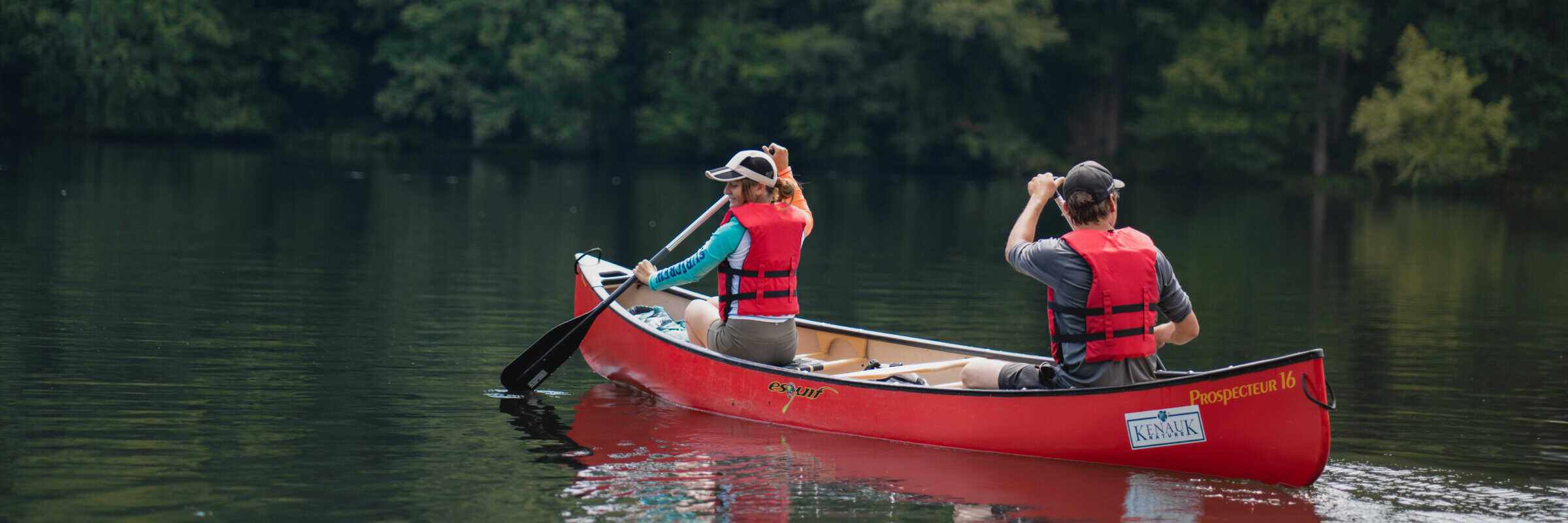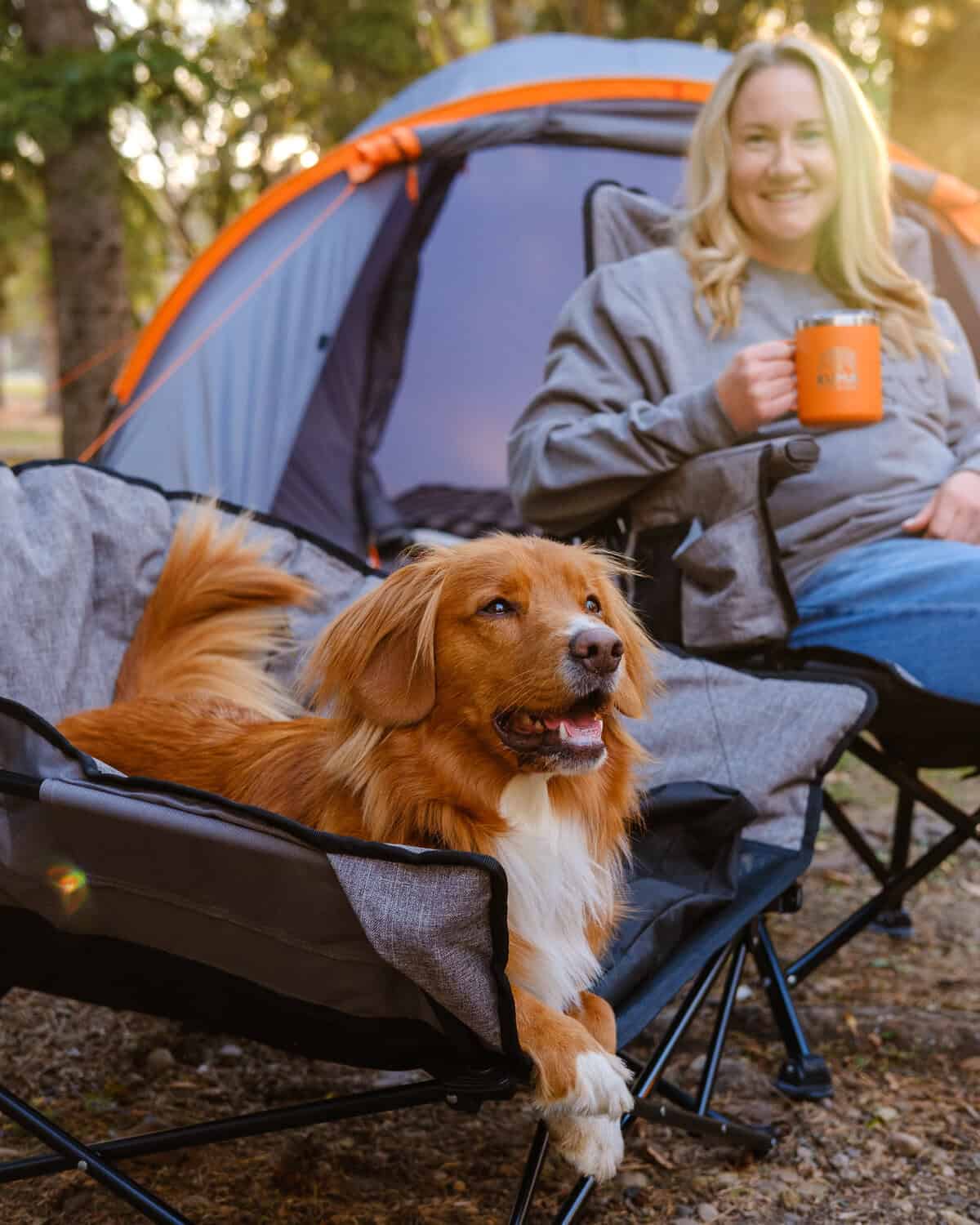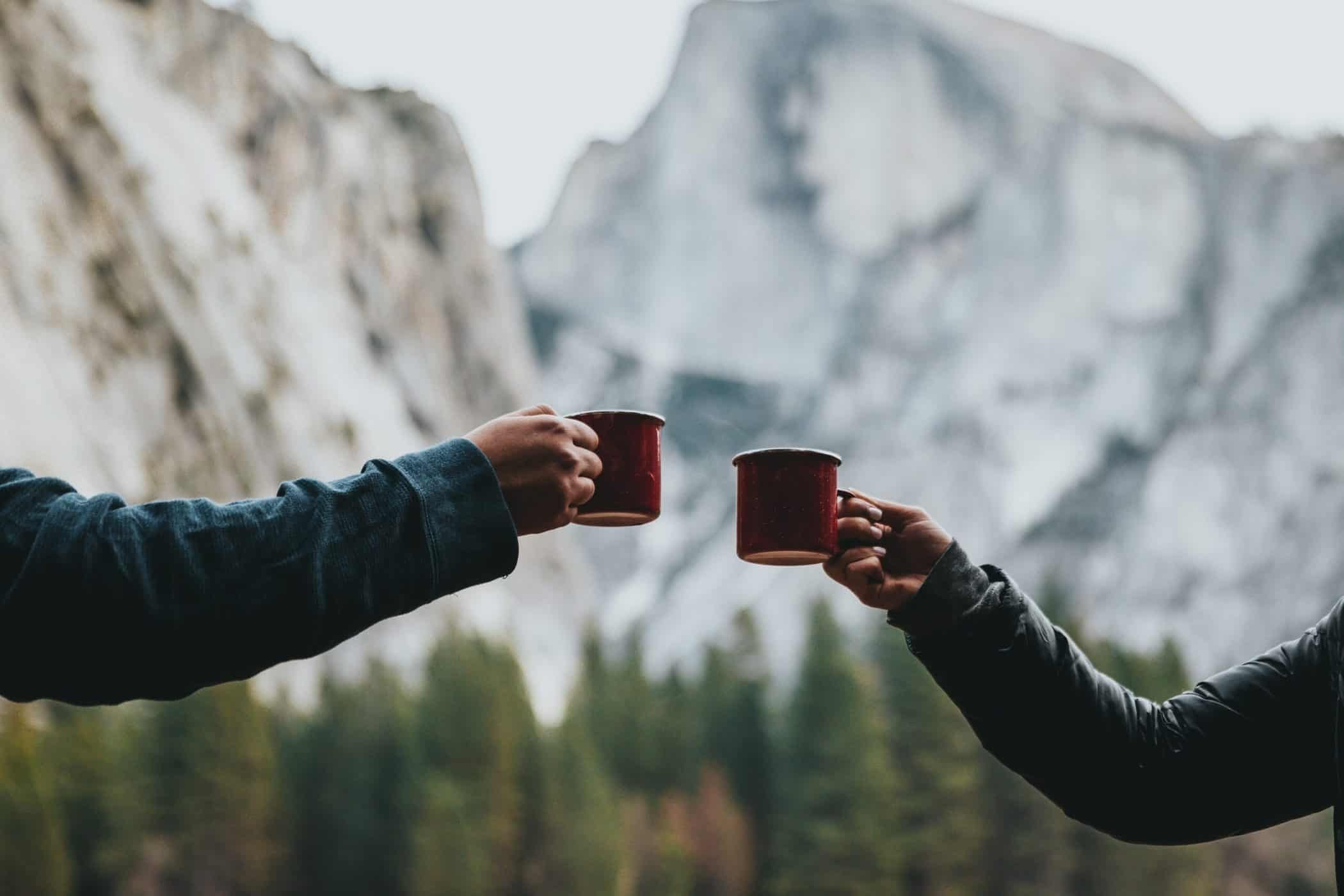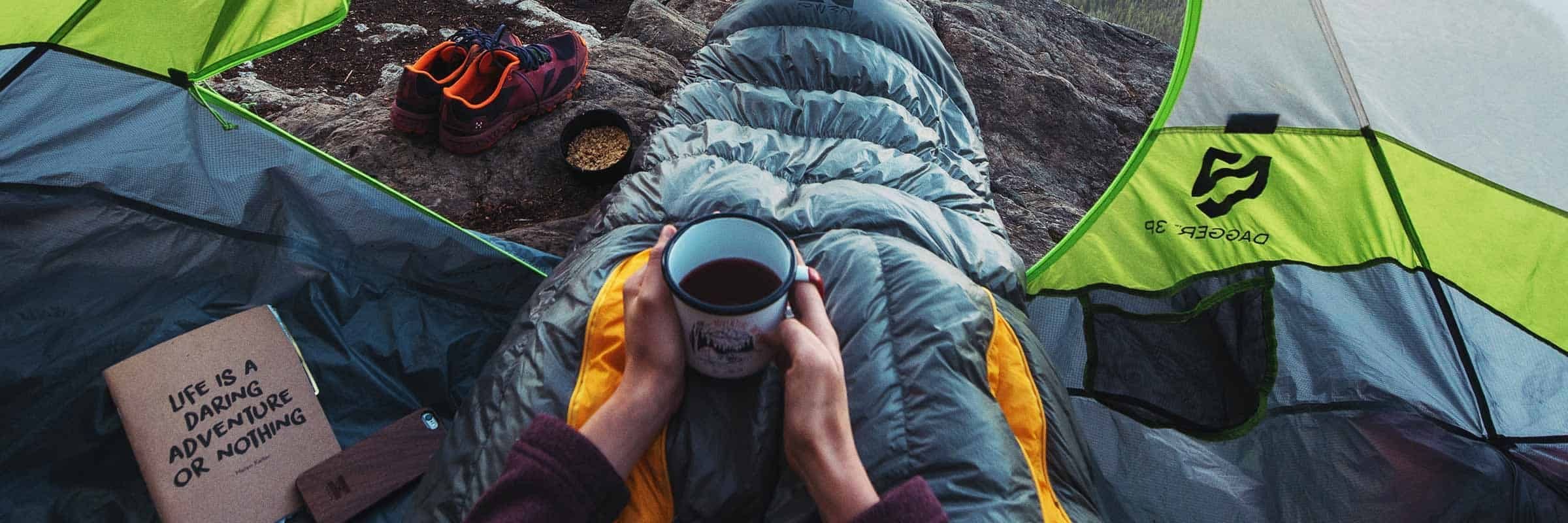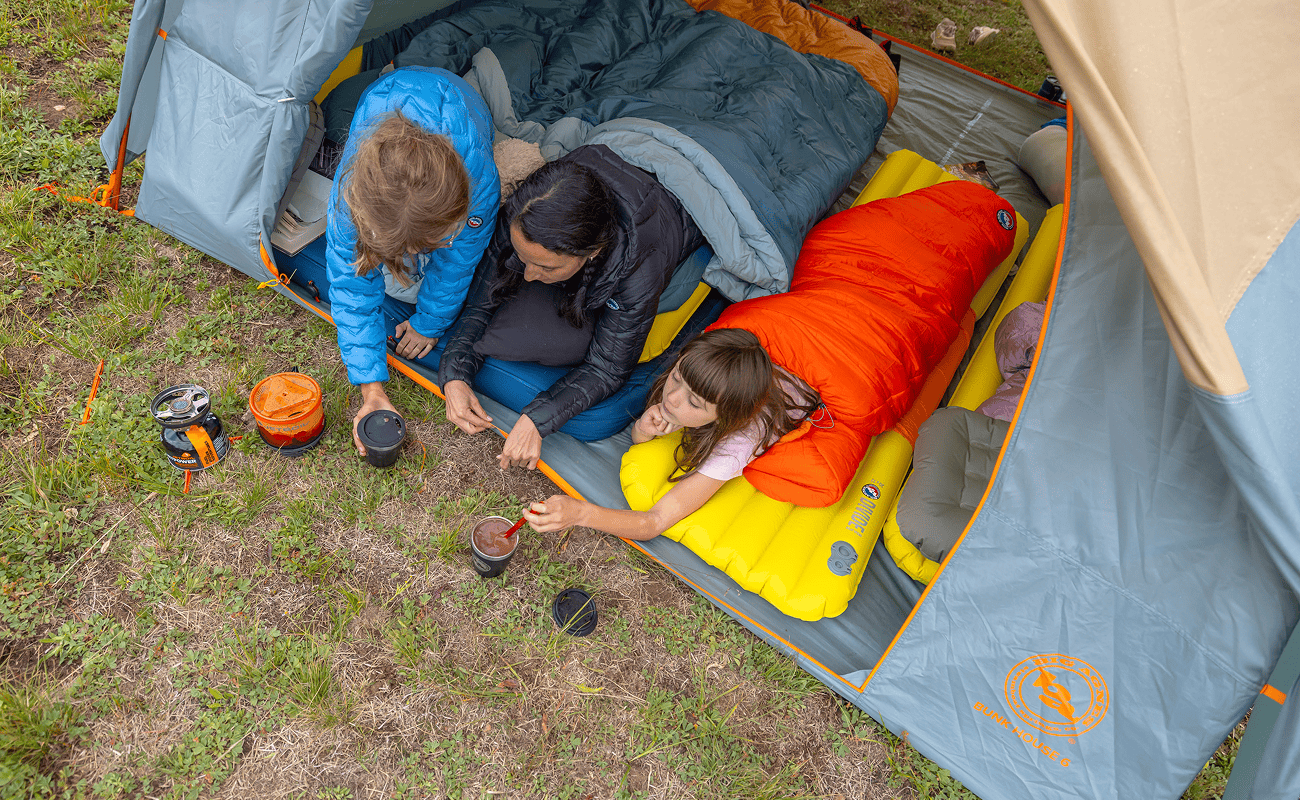Camping is fun—we promise! But nothing ruins a weekend outside like uncomfortable gear, lacklustre comforts, and a bad night’s sleep. Whether you’re a first-time camper or new parent hoping to establish a family tradition, creating a more comfortable camping trip can be as simple as replacing that leaky tent or packing a warmer sleeping bag. To help you maximize your time in the great outdoors, we’ve put together this guide that covers everything from gear recommendations and packing list essentials to expert tips like how to choose the right campsite.
Understanding the Importance of Comfort
Camping is about appreciating nature’s simple pleasures: the dappled sunlight through a quiet forest, the symphony of birdsong, a cozy campfire. When you rough it—we’re talking lumpy sleeping pads, cramped tents, lopsided camp chairs, and coolers that don’t stay cold—you risk swapping memories for misery.
A comfortable camping trip doesn’t have to mean luxury, either. (That’s what glamping is for.) It’s about setting yourself up to actually enjoy your time outside. When you’re well-rested, warm and dry, you’re free to focus on what really matters: slow mornings, peaceful surroundings, and most importantly, shared time together in nature. A little discomfort may be inevitable, but with the right mindset, gear, and these tips, you can learn how to make camping more comfortable.
Why You Should Prioritize Comfort:
- A good night’s sleep: Wake up refreshed and ready for the day, not stiff and cranky.
- Less stress: Packing the right gear means being prepared for any scenario (bugs, scrapes, and rain).
- More fun: Creature comforts can turn a dreaded pastime into a cherished family tradition, especially with young kids or first-time campers in tow.
Five Essential Camping Tips
Whether you’re new to camping or a seasoned pro, these essential camping tips are a must.
1. Choose a good campsite.
The right campsite can make or break a trip. When it comes to your home away from home, consider the following criteria.
- Location: Look for a site that is easy to access. Can you drive there? Or do you need to hike in gear? Are you planning to tent or bring a trailer? Consider the local climate and weather. Is the campground situated in a rainshadow or dry desert? At sea level or elevation? Before you leave, look up reviews of your preferred campsite on websites like Hipcamp and the Dyrt. You might just learn if it’s prone to swarms of bugs!
- Topography: Pitching a tent starts with the right pad. Opt for ground that is flat, shaded, and free of rogue roots and rocks. Pro tip: look for sites with natural windbreaks that can shield you from gusts and rain, and avoid dense, low-lying bushes where unwelcome critters hang out.
- Amenities: Basic amenities like washrooms, potable water, and trash bins may not sound glamorous, but they’ll save you a million little hassles over the course of your camp trip.
- Activities: A scenic view is nice, but a fun location is better. Book a campsite with on-site or nearby activities to keep boredom at bay and young minds entertained. For kids, stay at campgrounds with ranger programs, playgrounds, sandy beaches, and wide, flat trails. Hoping to hike, bike, or paddle? Choose a site close to the trailhead or lake (bonus points if they’re steps from the tent).
2. Invest in good gear.
Good gear doesn’t have to mean top-of-the-line—it just has to work well. The best camping gear for comfort? You’ll need the basics: a good tent, sleeping pad, and sleeping bag.
- Tent: Planning to share a tent? Size up for extra elbow room and space for your bag, boots, and extras (like full-size pillow). Not sure how to keep your tent warm at night? Insulate with a groundsheet and set up a fly to block any wind or rain.
- Sleep system: Don’t skimp on your sleeping pad. Thick, comfy sleeping pads are crucial to catching zzz’s in the wilderness. Add a warm sleeping bag rated to your climate and a good camp pillow. Pro tip: for even more comfort, bring an extra foam pad for additional cushioning.
- Waterproof your campsite: There’s nothing worse than an unexpected bout of rain while camping—unless you’re prepared for it. Besides a waterproof tent, it’s a good idea to invest in waterproof boots and a rainshell. You might want to stash a few tarps in your camping kit, too. (No one likes to make food in the rain).
3. Pack smart.
You’ve got the gear. You’ve booked the site. Now it’s all about packing smart. Learn what to bring to make camping more comfortable:
- Clothes: Outside, layers are key. Even at the height of summer, nights can get chilly. Bring light, layerable pieces like a button-down, soft shell, or light windbreaker. Pro tip: thick socks are the undisputed MVP of camp—bring extras and stay cozy all day long.
- Bring a comfy camp chair: Camp is only as comfy as you make it. To really make yourself at home, you’ll want a good camp chair. The best ones are sturdy, padded, easy to set up, and supportive—perfect for fireside chats and slow mornings sipping coffee.
- Lighting: Cozy upgrades like string lights can make late nights around the fire even more magical, while a reliable LED headlamp is crucial for midnight outhouse runs.
4. Elevate your camp kitchen.
Camp meals can be simple and delicious. There’s something about eating al fresco that makes food taste better. You’ll need the basics—a bowl, mug, utensils, and camp stove—but to really elevate your camp meals, consider these tips:
- Upgrade your cooking setup: From cutting boards and a good knife to BBQs and hibachi grills, the opportunity to dial in your camp kitchen (and meals) is endless.
- Pack a sturdy cooler: There’s nothing worse than soggy hotdogs. A well-insulated cooler is crucial for keeping things cold all weekend long.
- Go gourmet: Cast iron pizza? Fireside ramen? Indulgent s’mores? Pour over coffee? Challenge yourself to make campfire culinary masterpieces worth bragging about.
5. Bring games and creature comforts.
Camping doesn’t come without its inconveniences. Creature comforts can ease forecast blues, boredom, and homesick moments, especially for kids or first-time campers. Whether it’s your favourite comic book or a Bluetooth speaker, these non-essential but coveted extras offer a slice of home:
- Pack games: Card games, travel puzzles, or classic charades are perfect for filling downtime at camp.
- Bring a luxury item: A “just-for-fun” item (think stuffed animals, game consoles, or a Kindle) can help acclimate kids and reluctant campers.
- Cozy it up: Bring a cozy camp blanket or a pair of slippers and be the envy of your neighbours.
Bonus: practice! Before you head out, do a trial run in your backyard. You’ll quickly find out what’s necessary, what’s not, and where you can add more comfort.
Key Camping Gear
With every camping trip, your packing list will get pared back, added to, or refined. But where to start? Use this handy camping checklist to stock up on the essential camping gear you need to spend the weekend outside.
Sleeping
A successful camping trip starts with a good night’s sleep. You’ll want:
- A sleeping bag rated to the season and climate you’re in. If you’re planning to car camp, you might want to opt for one that is roomier than a narrow, mummy-style backcountry bag.
- A sleeping pad or inflatable air mattress (plus patch kit, just in case).
- A camp pillow.
- Optional: liners keep your sleeping bag dirt and grit-free, while foam floor tiles add extra insulation under your tent.
Shelter
If you invest in anything, make it a good tent. Look for one that is:
- Spacious and easy to set up. Consider sizing up for even more room.
- Designed for multiple seasons. 3-season tents can be pitched in spring, summer, and fall.
- Waterproof and comes with a full coverage rainfly and adequate ventilation.
- Optional: Accessories like a footprint or tarp for ground protection, gear lofts, or extra stakes and guylines are always handy.
Furniture
Comfy seating and extra surfaces are overlooked additions that add convenience and comfort. Consider bringing:
- A sturdy, comfortable camp chair with good back support (bonus points for footstools and drink holders).
- A compact folding table or large cooler that can double as a prep table.
- Optional: A hammock for midday naps and after-dinner reads.
Cooking
You’ll need the basics, but you’ll (eventually) want the extras. A minimal camp kitchen should at least have:
- A camp stove and fuel, plus cutting board and quality knife. (If you’re packing light, you can opt for a pocket knife and an ultralight board.)
- Lightweight cookware. For simple meals, a jetboil will do the trick, but you can always upgrade to a pot, pan or kettle.
- Dishware and utensils. Enamel is a classic choice while collapsible silicone sets allow you to pack light. Make sure to bring your favourite camp mug.
- A well-insulated camp cooler. If you’re camping with a crowd, opt for 40-60 quarts. Camping solo? You might only need 25-45 quarts.
- Optional: Quick-drying camp towels, extra ice packs, storage containers, and dishpan.
Personal
From hygiene to safety, these are your personal must-haves. Don’t forget to bring:
- Toiletries, along with any medications or prescriptions.
- Sunscreen and bug spray.
- A full-sized towel, or if you’re looking to pack light, a quick-drying pack towel.
- A first-aid kit.
- Wallet, I.D., cellphone, and charger.
- Optional: Extra toilet paper, hand sanitizer, cosmetics, or earplugs.
Clothing
Dress for the weather, and you’ll camp comfortably day and night. Essential camping clothes include:
- Base, mid, or outer layers, depending on the season, climate, and temperature. Pack clothes that are moisture-wicking, quick-drying, and breathable.
- Waterproof rain jacket.
- Sunhat, plus a warm beanie for chilly evenings.
- Lightweight fleece jacket or packable puffy.
- Camp sandals and hiking boots or runners for activities.
- Extra socks.
- Swimsuit (and optional water sandals).
- Comfy sleepwear.
Accessories
These bonus items won’t make or break your trip—but they can make it a whole lot better. Consider bringing:
- LED string lights for added ambience at night.
- Games, cards, or books (or download podcasts, playlists, and audiobooks in advance).
- Solar charger or power bank to keep devices topped up.
- Handy multi-tool for quick fixes and camp chores.
- Camp blanket and slippers to stay cozy around the fire.
Camping Modes
Family Camping
Camping with kids? It’s doable. Fun, even! Camping allows kids to roam freely, get dirty, and play until sleep. Plus, nature decreases stress and offers endless entertainment. A parenting win-win.
First, start by practicing at home. Let little ones sleep in the backyard overnight. Once they’ve nailed the basics, you’re ready to tackle a campground. To get them excited, let them help pack their own gear (under supervision, of course). You’ll want to bring plenty of warm layers (and their favourite toy). You’ll need familiar snacks of course, plus backups for when the favourites run out.
Look for a campsite with good amenities and access to outdoor activities. (An on-site playground is always a good idea.) Make sure to build in plenty of downtime at camp. For teens, respect their need for alone time—and wi-fi, if it’s available. Other tips? Embrace the dirt, be safe, and keep things flexible. Nature is messy and that’s half the fun.
Eco-Friendly Camping
Camping sustainably doesn’t mean sacrificing comfort. With a little prep and the right gear, you can enjoy the outdoors while minimizing your footprint. From what you pack to how you cook and clean, small choices add up—and help ensure the places you love stay beautiful for future adventures.
Before you leave, prep meals at home to reduce waste and avoid excess packaging. Ditch single-use plastics and pack reusables: water bottles, beeswax wraps, bamboo or metal utensils, and containers. Make sure to bring biodegradable dish soap and toiletries, which is easy on rivers and lakes.
When it comes to gear, look for recycled or responsibly sourced materials. Certifications like bluesign® or labels that mention organic cotton, post-consumer plastic, or recycled polyester mean greener choices. Solar-powered chargers, lanterns, and GPS devices are great alternatives to battery-powered ones—and help cut down on energy use.
Finally, remember to practice the seven Leave No Trace Principles:
- Plan ahead and prepare.
- Travel and camp on durable surfaces.
- Dispose of waste properly.
- Leave what you find.
- Minimize campfire impacts.
- Respect wildlife.
- Be considerate of others.
Ready to take on summer camping? Find more expert tips.



